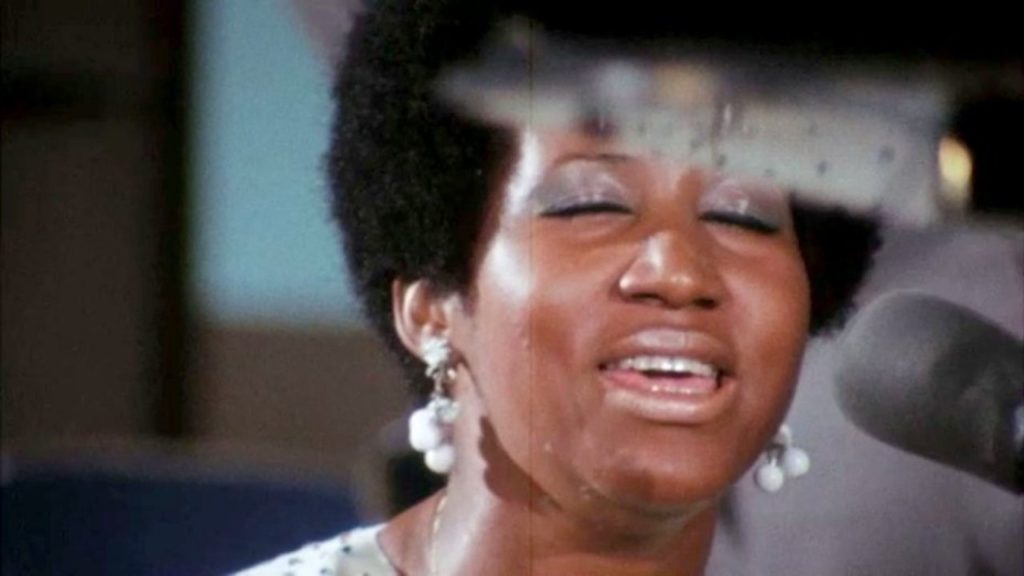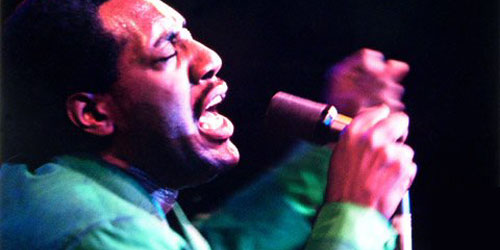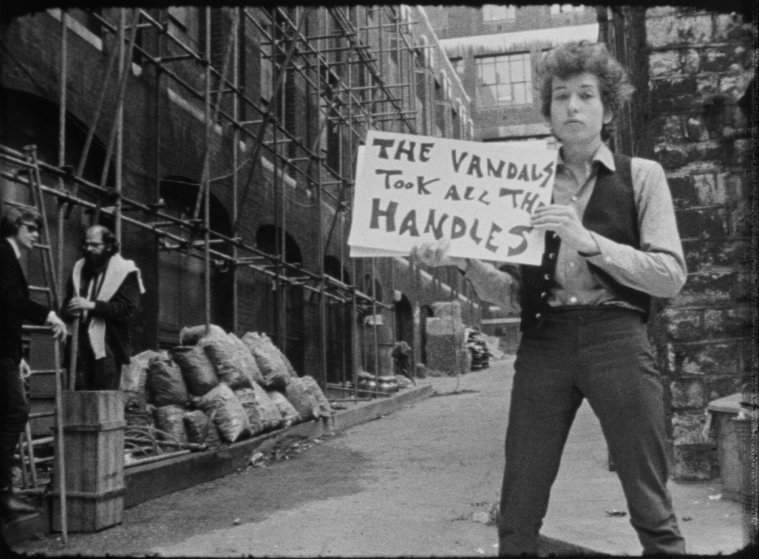
Amazing Grace is, at once, the recovery of a lost film, the document of an extraordinary live recording and an immersive, spiritual experience.
At the height of her popular success in 1972, Aretha Franklin recorded a live album of gospel music. She brought her producer Jerry Wexler and her band to New Temple Missionary Baptist Church in Los Angeles, a large but modest church with a cheesy mural of Jesus emerging from the waters after his baptism by John the Baptist. Accompanied by James Cleveland and the Los Angeles Community Gospel Choir, she performed for two nights, and the recordings became Amazing Grace, the top-selling gospel album of all time.
The whole thing was filmed by director Sydney Pollack and his crew with five cameras. Having made his bones in live television, Pollack would seem to be a great choice, but he made a critical mistake – he neglected to use clappers, the equipment that allowed for synchronizing the filmed images with the recorded sound. Frustratingly worthless, the film sat in canisters until decades later when technology allowed the music to be synced to the 16mm film. Aretha, however, was notoriously prickly in business affairs, and the rights could not be secured until after her death. Alan Eliot is responsible for finding and assembling Pollack’s footage and turning it into a feature film that could be released for the rest of us to see; appropriately, Eliot’s credit is “Realized and produced by Alan Eliot”.
What brought Aretha get to this moment in 1972? Aretha had grown up in the Detroit church led by her formidable father, C.L. Franklin, immersed in gospel music until she launched a pop music career at age 18. When she was 25, she began working with Wexler, who “got” her, and she became a soul and crossover superstar with Respect, I Never Loved a Man (The Way I Love You), Do Right Woman, Do Right Man, Baby I Love You, (You Make Me Feel Like) A Natural Woman, Chain of Fools, Ain’t No Way, Think, I Say a Little Prayer and Rock Steady. At 30, Aretha commanded the field of R&B and looked to return to her gospel roots.
When Aretha enters the church, the atmosphere is electric, and Aretha is ready from her very first note of Wholy Holy. The church audience knows their gospel music, appreciates what they are witnessing and is, to a person, thrilled. The audience becomes more and more emotionally involved.
Aretha’s version of What a Friend We Have in Jesus is unrecognizable (in the very best way). On Precious Memories, Aretha’s humming is internally intense, and then her voice soars. Completely committed, Aretha produces a prodigious amount of sweat.
The high point of the film is Aretha’s closing song on the first night, Amazing Grace. It’s a very long version of the song, and the choir doesn’t sing until the very end. As Aretha’s instrument wrings every drop of emotion from that most familiar song, we watch the choir members’ reactions, which range from admiration to inspiration, many moved to tears. The moment is one of genius for Aretha and one of epiphany for the choir and for the film audience.
One of the great pleasures of Amazing Grace is watching the choir leader, Alexander Hamilton, lead his choir with an expressiveness that is both elegant and funky. If there is a co-star in Amazing Grace, it’s Alexander Hamilton.
There are pauses for technical issues, which bring out the authenticity of the moment and reinforce that this was a live event. It’s easy to spot Mick Jagger and Charlie Watts in the crowd on the second night.
Where does Amazing Grace fit in the concert film canon along with Monterey Pop, The Last Waltz, Stop Making Sense, Woodstock and The T.A.M.I. Show? It’s in the conversation.
Amazing Grace, which is on my list of Best Movies of 2019 – So Far, can be streamed on Amazon, iTunes, Vudu, YouTube and Google Play; the DVD can be rented from Redbox.


